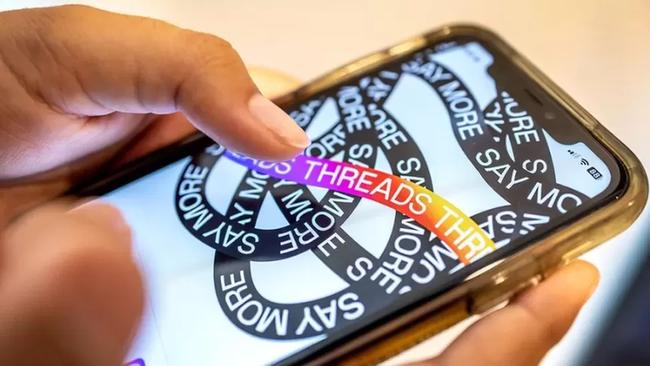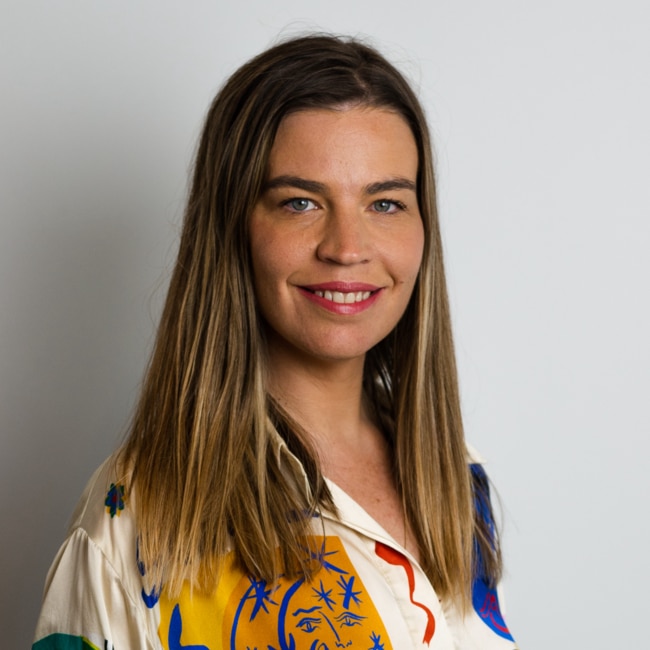How Australian businesses are using Threads to connect with customers
Marketers are jumping on social media’s newest channel, Threads. But can Meta’s new channel win with audiences in a crowded landscape?

Meta-owned social media platform Threads has become the fastest growing app, clocking 100m users within the first five days since it was launched.
The platform will operate without advertising for the “foreseeable future”, however brands are chasing “organic” growth by establishing accounts on the channel to communicate with their audiences.
Among the growing user base in Australia is a wide range of businesses, from news organisations to major telcos, such as Telstra, as well as small local cafes and fashion brands.
Thread’s rapid uptake has surpassed other new social media apps launched in recent years, including BeReal, a photo-sharing app released in 2020 as the Instagram “antidote”, which took seven months to hit 20m users.
It has also overtaken usage of other major tech tools, the most influential of which recently included OpenAI’s content-generating platform ChatGPT. It took two months to reach the 100m user mark since it was made available for public use in November 2022.
Thread’s arrival comes at a time of greater maturity in the social media landscape in comparison to the likes of Twitter, which first launched in 2011, when social media channels were still emerging as commercially-led content platforms for brands.
It also comes as Twitter has faced declining daily and monthly active users. Visitors are also down year-on-year, according to SimilarWeb data released in April.
Threads’ audience is not a completely “cold” one, as Meta has prompted users to sign up via their existing Instagram accounts. The new platform and has been designed for “sharing with text”, however it is also suitable for images and short videos, too.
Meta wants it to be “a positive and creative space to express your ideas”.
There may be benefits for fast-moving brands establishing their presence on the channel, according to some marketers and advertisers.
Social client partner at Sydney-based communications firm, Eleven, Erin Brizga told The Growth Agenda: “The early bird catches the algorithm.”

“Brands have time to test and learn what type of content works for their audience while Threads is in its infancy. Building a highly engaged audience on Threads now builds share of voice and brand equity, plus it’s a great time to build a strong organic audience ahead of the inevitable monetisation in the future.
“By joining now, brands can capture the attention and loyalty of users who are eager for new content and experiences, helping to build a dedicated following before competition becomes fierce. Threads also gives brands the opportunity to act as users and engage in playful banter with other brands,” Ms Brizga said.
It’s also an opportunity for brands to establish themselves as “frontrunners”, according to Ms Brizga, and “play a part in shaping the platform’s culture and norms”.
Some consumer brands in Australia are finding early signs of engagement.
Around 130,000 of graphic design platform Canva’s followers have joined the brand on Threads (it has 1.5m followers on Instagram).
It is using a generative AI tool it calls “Magic Write” (which uses ChatGPT’s technology and is integrated into Canva) to start threads and respond to users.
Head of social and business-to-business marketing at Canva, Simon Guerrero said: “It’s not every day that a new social media platform comes along. It’s early innings for Threads but the rapid uptake suggests that audiences are eager for new ways to engage with each other and brands.”
He thinks there is an opportunity for businesses to increase their “organic” following in Thread’s current ad-free environment.
“We were quick to act, relying on creative copy and a playful tone of voice to grow our following. It’s encouraging and we look forward to building on this and engaging with our community as there’s clear interest from them.”
Part of the rapid uptake could also be attributed to how easily user data can be transferred from Instagram to Threads.
Kmart Australia started sharing content two days after Threads launched with a post that read “Day 2. Just got the boss’s approval. Are we too late?” It then shared, “Just here to see your Kmart finds and stay relevant” with its 42,500 followers.
Kmart has 1.3 million followers on Instagram, and general manager of marketing at Kmart, Rennie Freer said they are “highly engaged”, often sharing their Kmart purchases on the channel.
“We think it’s important for us to be where our customers are, and have seen great success on popular platforms such as TikTok since posting more frequently this year. Threads feels like a really new and exciting platform for Australians who might not have been using Twitter in the past.”
Mrs Freer added that the “chat” focused channel is appealing to the brand to further connect with its customers.
However, some marketing experts think it’s prudent to wait before rushing to invest time and resource in new channels.
Professor of marketing science and director of the Ehrenberg-Bass Institute, Byron Sharp, said brands should “resist wasting money on a shiny new thing.”
“Brands should treat it like any other media option (and) wait until there are trustworthy viewer metrics,” he added, which may not be available for some time.
Founder and chief marketing officer at beauty brand, Frank Body and founder of independent branding agency, Willow & Blake, Jessica Hatzis, said that given the early stage, “acting quickly” is the strategy for brands.
Ms Hatzis has brought both Frank Body and Willow & Blake onto Threads in the past week, but plans to assist at least 50 per cent of her client base of brands across homewares, health, fashion, beauty and kids establish their presence on the platform.
She thinks the photo and text-based content makes the barrier to entry low, given that video production is not the focus, as it is for other social media channels such as TikTok.
That said, she observed many businesses waited too long to claim their audience and voice on TikTok when it launched in 2016.
“A lot of brands missed the boat with TikTok and have spent the last two or so years really trying to catch up. We’re encouraging our clients to not make that same mistake again with Threads,” she said.
“I think if you leave it, it’s going to be one of those platforms that, in six months’ time, you’re going to try and join, it’s going to be really noisy.
Reflecting on the launch of Instagram, Ms Hatzis said: “It was so much easier to grow a really strong and dedicated fan base or community on those channels, when there aren’t as many people to compete with.”
Ms Hatzis said there are still some risks brands take on when signing on to new channels, nodding to the experimental nature that comes with apps that are in their infancy.
“You never know which platform is going to be the one to take off. We jumped on BeReal really early with a lot of clients last year, and it hasn’t quite taken off in the same way for brands. But if you’re not there, you still have that potential to miss out,” she said.
“There’s going to be some marketers who are going to find it challenging to get the OK from their seniors or their exec team to open yet another channel. I think given the resources required, it’s a bit of a no-brainer for me to give it a go.”
“Done, not perfect, should be the approach to a platform like this,” she added. “As long as you have a good handle on what your brand voice is, how you take messages to market, it shouldn’t really be that complicated to get up and running on the platform.
“Brands that potentially don’t know what they stand for or how they’re going to talk might have a difficult time, but they’re going to have that challenge across every social platform.”






